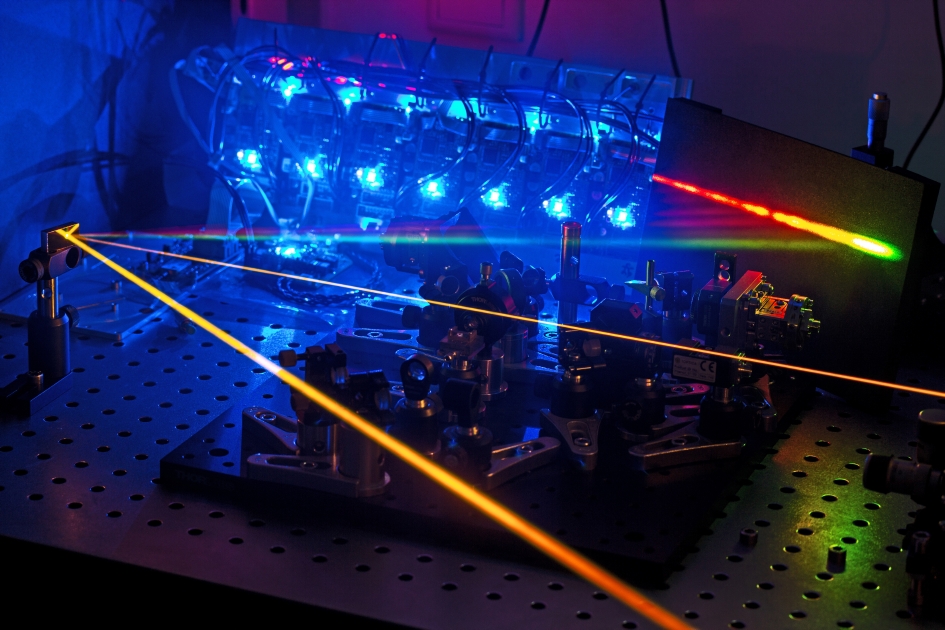Rohde & Schwarz (R&S) presented a proof-of-concept for a 6G wireless data transmission system based on photonic terahertz communication links at the European Microwave Week (EuMW 2024) in Paris, helping to advance the frontier of next-generation wireless technologies. The ultra-stable tunable terahertz system developed in the 6G-ADLANTIK project is based on frequency comb technology, with carrier frequencies significantly above 500GHz.
On the road to 6G, it is important to create terahertz transmission sources that provide a high-quality signal and can cover the widest possible frequency range. Combining optical technology with electronic technology is one of the options to achieve this goal in the future. At the EuMW 2024 conference in Paris, R&S showcases its contribution to state-of-the-art terahertz research in the 6G-ADLANTIK project. The project focuses on the development of terahertz frequency range components based on the integration of photons and electrons. These yet-to-be-developed terahertz components can be used for innovative measurements and faster data transfer. These components can be used not only for 6G communication, but also for sensing and imaging.
The 6G-ADLANTIK project is funded by the German Federal Ministry of Education and Research (BMBF) and coordinated by R&S. Partners include TOPTICA Photonics AG, Fraunhofer-Institut HHI, Microwave Photonics GmbH, Technical University of Berlin and Spinner GmbH.
A 6G ultra-stable tunable terahertz system based on photon technology
Proof-of-concept demonstrates an ultra-stable, tunable terahertz system for 6G wireless data transmission based on photonic terahertz mixers that generate terahertz signals based on frequency comb technology. In this system, the photodiode effectively converts optical beat signals generated by lasers with slightly different optical frequencies into electrical signals through the process of photon mixing. The antenna structure around the photoelectric mixer converts the oscillating photocurrent into terahertz waves. The resulting signal can be modulated and demodulated for 6G wireless communication and can be easily tuned over a wide frequency range. The system can also be extended to component measurements using coherently received terahertz signals. The simulation and design of terahertz waveguide structures and the development of ultra-low phase noise photonic reference oscillators are also among the working areas of the project.
The ultra-low phase noise of the system is thanks to the frequency comb-locked optical frequency synthesizer (OFS) in the TOPTICA laser engine. R&S's high-end instruments are an integral part of this system: The R&S SFI100A wideband IF vector signal generator creates a baseband signal for the optical modulator with a sampling rate of 16GS/s. The R&S SMA100B RF and microwave signal generator generates a stable reference clock signal for TOPTICA OFS systems. The R&S RTP oscilloscope samples the baseband signal behind the photoconductive continuous wave (cw) terahertz receiver (Rx) at a sampling rate of 40 GS/s for further processing and demodulation of the 300 GHz carrier frequency signal.
6G and future frequency band requirements
6G will bring new application scenarios to industry, medical technology and daily life. Applications such as metacomes and Extended Reality (XR) will place new demands on latency and data transfer rates that cannot be met by current communication systems. While the International Telecommunication Union's World Radio Conference 2023 (WRC23) has identified new bands in the FR3 spectrum (7.125-24 GHz) for further research for the first commercial 6G networks to be launched in 2030, But to realize the full potential of virtual reality (VR), augmented reality (AR) and mixed reality (MR) applications, the Asia-Pacific Hertz band up to 300 GHz will also be indispensable.
Post time: Nov-13-2024


